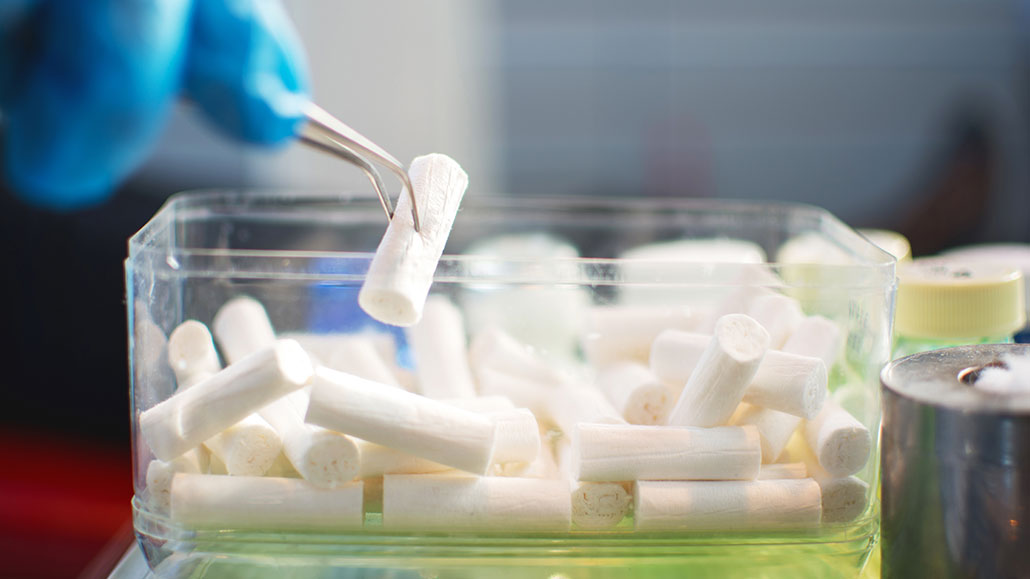Simpler, easier COVID-19 test developed with kids in mind
Designed by moms, it avoids any need to stick an uncomfortable swab up the nose

Instead of using cotton swabs on a stick, the new test system uses soft rolls of cotton placed under the tongue.
Bojan89/iStock/Getty Images Plus
Testing for COVID-19 has usually required sticking a cotton swab far into the nose — uncomfortably far up. Two scientists at the University of Milan, in Italy, knew their kids would fight repeated testing that way. Yet as biologists, Elisa Borghi and Valentina Massa knew repeated testing for the new coronavirus can be important. So these moms teamed up with others at their university to refine a way to test for COVID-19 in kids and everyone else.
And to prove kids would tolerate it, they had their own kids try it out at home. Borghi and Massa were part of a team that reported success with what they’re now calling a “game-changing strategy.” They describe details of it in the March Pharmacological Research.
Saliva includes all fluids in the mouth. “It captures stuff dripping down the back of your nose or being brought up from your lungs,” explains Anne Wyllie. She’s a microbiologist at Yale University in New Haven, Conn. Cells that the new coronavirus targets have turned up in the salivary glands and on the tongue. “Testing saliva, therefore, increases your chance of [finding] the virus,” she says. Indeed, saliva is already the basis for some tests scouting for the virus.
Wyllie and others compared results from a saliva test for COVID-19 with tests done by swabbing far up in the nose. Both tests used the same genetic method to hunt for the virus. And both worked well. The team shared its findings in the New England Journal of Medicine last September 24.
The new Milan test is based on the Yale technique described by Wyllie’s team. But while the Yale group had patients spit into a cup, the Milan test uses cotton dental rolls. Those wads were designed to soak up excess saliva during dental procedures. Sampling with the dental rolls is simple enough for kids to do by themselves.
And based on data from 192 adults, these tests compare well to those using swabs jabbed uncomfortably far up the nose.
The researchers then used dental rolls to collect saliva from 109 kids. Here, too, the new test performed as well as, if not better than, the nasal test. Saliva turned up the virus in six people who showed no symptoms. Nasal swabs of these people failed to find the virus. In two other people, saliva tested turned up the coronavirus two days before the nasal swabs could. This suggests, the Milan team says, that the mouth and throat may be “the first site for viral replication.”
That’s important, Borghi adds. Perhaps as many four in every 10 COVID-19 infections cause no symptoms. And more than half of all infections come from people with no symptoms. That’s what a team at the Centers for Disease Control and Prevention reported in January. Even when symptoms do show up, it may not be until after children might have exposed their whole class. Along the way, parents or grandparents also risk getting infected.
Testing with saliva could also help answer ongoing questions about children and COVID-19. Massa says that when it comes to spread of the disease, it’s been “very difficult to design a study to try tracking what’s the role of students — especially young students.” One reason: Few children would accept having sticks stuck into their nose on a repeated basis.
And those test swabs can cause damage as they’re being inserted if kids jerk their heads away, Borghi says. Another advantage of using the dental rolls: They can be used in tests that screen for other viruses.







